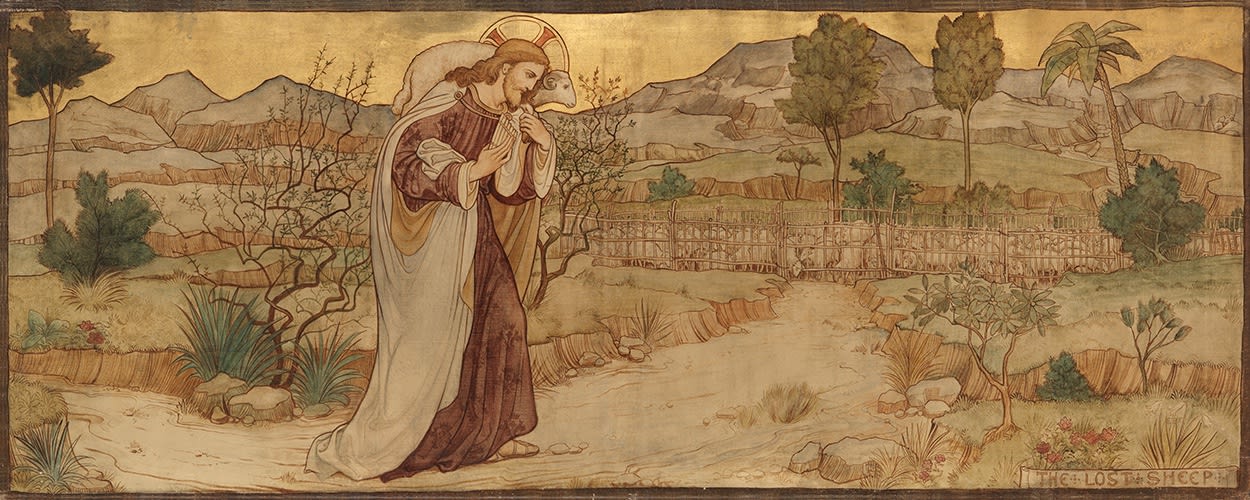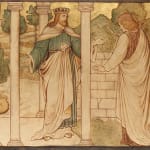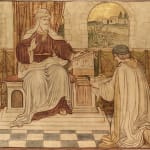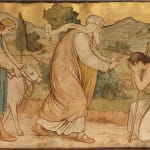
The Parable of the Talents

The Parable of the Great Supper

The Parable of the Prodigal Son
William George Rich (1857-1921)
The Parable of the Lost Sheep (32 x 81 inches)
The Parable of the Talents (32 x 109 inches) (inscribed 'Lord Egerton' on stretcher)
The Parable of the Great Supper (32 x 109 inches)
The Parable of the Prodigal Son (32 x 81 inches)
Further images
This set of parables once decorated the chapel at Tatton Park in Cheshire, home to the Egerton family. Its newly restored interior was described by Country Life in 1906:
“The chapel is decorated in the Italian style. The stalls are in walnut carved at Vicenza, the figures of angels in the stained-glass windows are from designs of Fra Angelico, and paintings of the parables by Rich, from Heaton and Butler, ornament the walls; the entrance gates came from a side chapel of a Venetian church, and consist of a flowing design in wrought iron or vine leaves and grapes picked out in blue and gold.”
William George Rich (1857-1921) painted murals and designed stained glass windows in a number of churches during the 1880s and '90s. Hailed as obtaining 'the first rank among ecclesiastical artists' (Bridport News, 20 July 1894, p 8), Rich's designs can be found in St Peters (Bexhill), Holy Trinity (Dorchester), Harberton Church, as well as churches in Hammersmith and Ealing. Rich was born in Oxford, where his youth was spent as a chorister in Christ Church Cathedral. After moving to Hammersmith, he worked for a time at Waring & Gillow’s, but soon received commissions for ecclesiastical decoration, and worked for the famous firm of stained glass manufacturers, Heaton, Butler and Bayne.




